#naturalist
Text

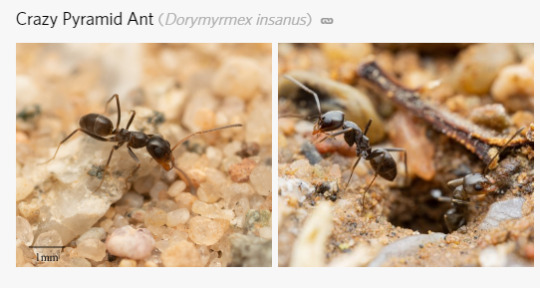
big fan of bug names that sound like they were given by the bug's bitter ex
#insect#insects#bug#bugblr#entomology#bugs#inaturalist#naturalist#nature#ecology#zoology#biology#hawk noises#if anyone has more please add them
318 notes
·
View notes
Text
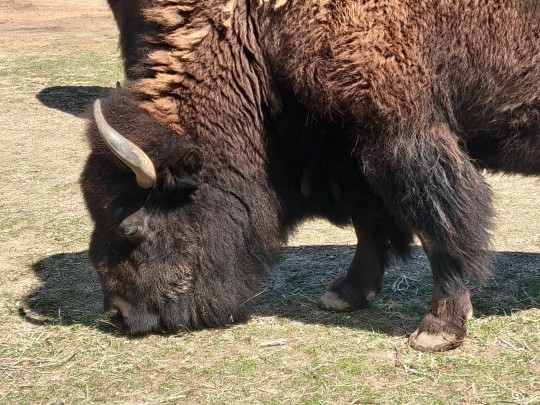
American bison (Bison bison)
#can you guys tell bison are my fave animal#mine#bison#hoofstock#animals#wildlife#prairie#buffalo#american bison#nature#naturalist#nature photography#photography#mammals#ecology#north america#north american wildlife#conservation#ecologist#biologist#wildlife biology#wildlife biologist#biology#national parks#badlands#badlands national park#national park
20 notes
·
View notes
Text
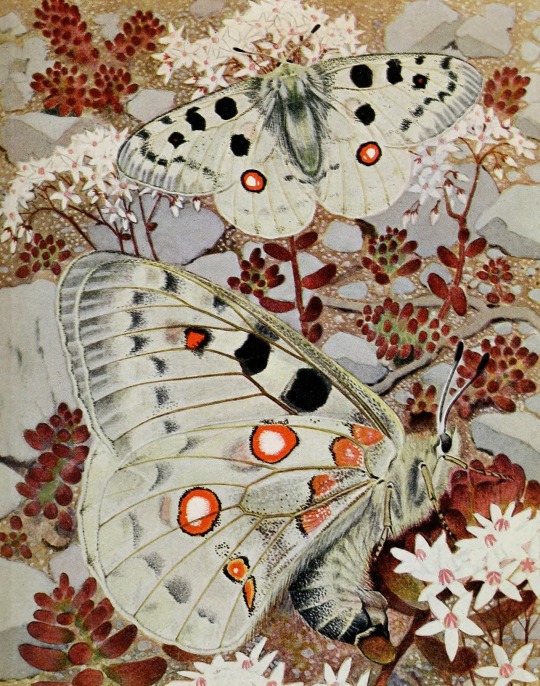
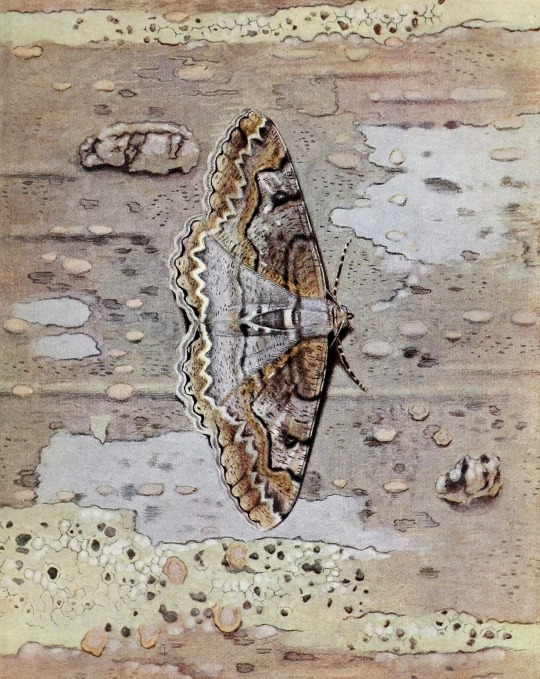

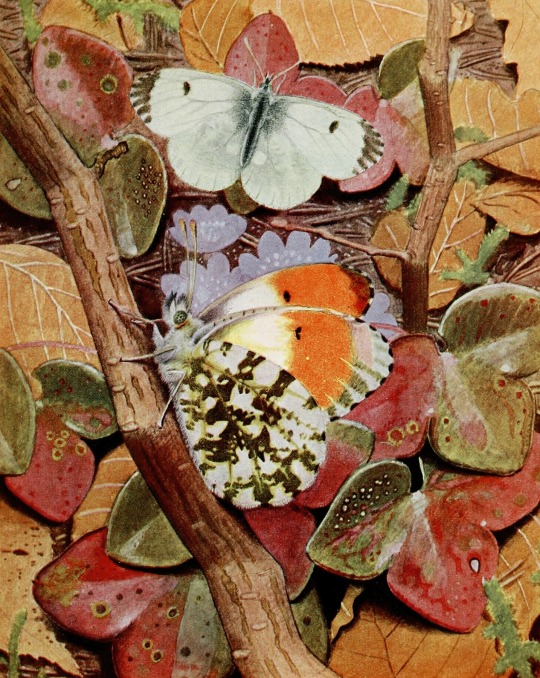
Plates from Les Papillons dans la nature (1934) by Paul-André Robert.
#Paul-André Robert#art#swiss art#illustration#illustrations#animals in art#animals#insects#butterflies#moths#butterfly#moth#20th century art#20th century#1930s#30s#naturalist#aesthetic#nature
34 notes
·
View notes
Text

Listed some new bumper stickers in my shop 🐌
3K notes
·
View notes
Text

#curvy girls#curvy and cute#nude pose#nudity#mirror selfie#hot noods#i sell noods#egirl noods#daily noods#hot nude#newdity#i sell newds#spicy newds#newd#nekked#in the raw#feeling nude#naturalist#curvy body#thick vibes only#onlytease#curvy#girls with curves#inked and curvy#inked girls#tattoed girls#sexy tattoed women#tattoed babe#onlyf@nz#18+ only
1K notes
·
View notes
Text

By 30, your face should be a knife.
By 30, you should have a barbed tongue longer than your arm.
By 30, you should be able to slam your head into a tree 20 times per second.
By 30, you should be able to withstand an acceleration of 1,400 g’s.
By 30, you should be a woodpecker.
2K notes
·
View notes
Text
TS4 Herbalist LookBook




the cold weather always inspires me to play my cozy saves🍃☕enjoy the links
1 - Hair | Top | Pants | Shoes |
2 - Hair | Top | Pants | Shoes |
3 - Hair | Top | Skirt | Shoes |
4 - Hair | Top | Pants | Shoes | Bag |
thank you to all of the very amazing cc creators | @ebonixsims | @b0t0xbrat | @charonlee | @whoopssim | @arethabee | @kikovanitysimmer | @tinasims | @gorillax3-cc | @jius-sims |
~ DelSolSasha
#sims 4#ts4cc#ts4 lookbook#sims 4 cc#the sims community#ts4#ts4 simblr#lookbook#simblr#sims lookbook#the sims#the sims 4#ts4 custom content#sims 4 lookbook#the sims cc#the sims custom content#sims 4 custom content#the sims 4 cc#herbalism#naturalist
1K notes
·
View notes
Text










#afrodesiacworldwide#submission#natural beauty#pretty#natural hair#cute#black beauty#beautiful#beauty#black girls rock#naturalist#brown skin women#melanin#melanated#dark skin women#dark skin girls#black women#black woman#afro#afro hair#afro style
756 notes
·
View notes
Text

She looks amazing!
#adult model#beautiful body#beautiful model#beauttiful girls#fashion model#amazing body#beautiful#beautiful women#body image#loungwear#naturalist#body positive#great body#tumblr girls#cute girl#fit girls#amazing beauty
1K notes
·
View notes
Text

Outdoor work in this case 😉
583 notes
·
View notes
Text


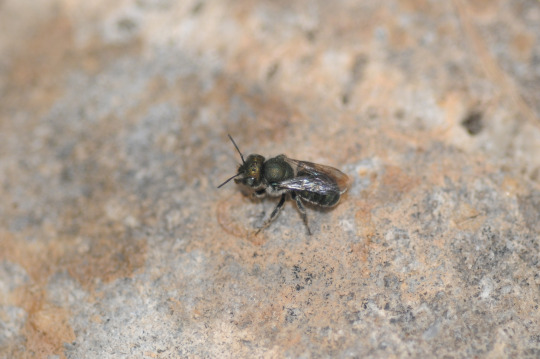
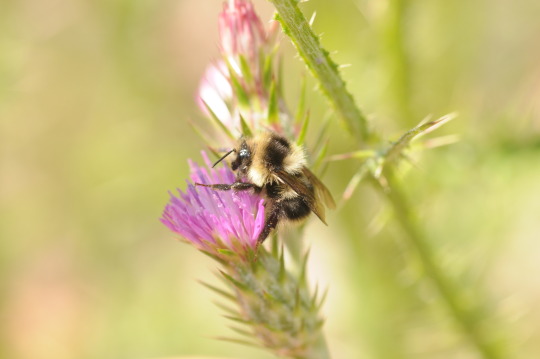
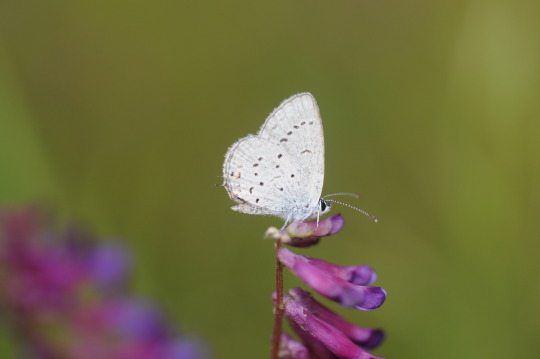
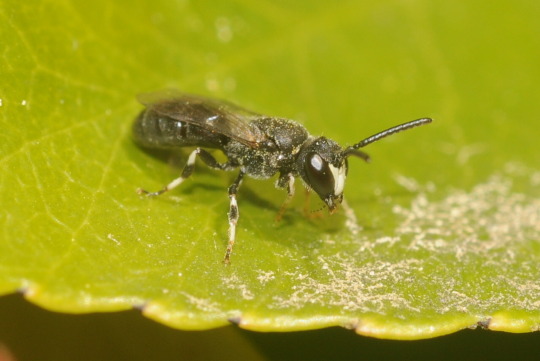
Genus Gasteruption, Genus Ischnura
Genus Osmia, Black-tailed Bumble Bee (Bombus melanopygus)
Western Tailed-Blue (Cupido amyntula), Genus Hylaeus
my camera has been acting up(nearing the end of its life, probably), so it's been a struggle to get decent shots. i managed to scrape together a handful i'm pretty happy with, though
#inaturalist#naturalist#nature#ecology#zoology#biology#insect#insects#bug#bugblr#entomology#bugs#photography#nature photography#wildlife photography#hawks photos#butterflies#lepidoptera#insectblr#bees#wasps#hymenoptera#damselflies#bummed abt the camera but what can you do. its 20 years old#working on getting a replacement but im using this one until it literally wont let me anymore#so dealing with it despite the annoyance it is!
23 notes
·
View notes
Text
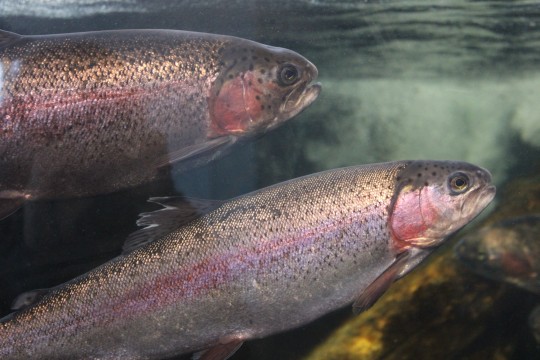
Rainbow trout, Oncorhynchus mykiss, at Monterey Bay aquarium
#fish#rainbow trout#monterey bay aquarium#monterey bay#aquarium#aquariums#nature#wildlife#nature photography#naturalist#mine#photography#ecology#north america#animals#wildlife biology#ichthyology#biology#wildlife biologist#ecologist#biologist#fishes
801 notes
·
View notes
Text
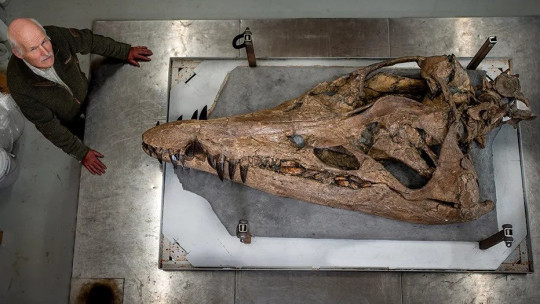
Gigantic Skull of Prehistoric Sea Monster Found on England’s ‘Jurassic Coast’
The remarkably well-preserved skull of a gigantic pliosaur, a prehistoric sea monster, has been discovered on a beach in the county of Dorset in southern England, and it could reveal secrets about these awe-inspiring creatures.
Pliosaurs dominated the oceans at a time when dinosaurs roamed the land. The unearthed fossil is about 150 million years old, almost 3 million years younger than any other pliosaur find. Researchers are analyzing the specimen to determine whether it could even be a species new to science.
Originally spotted in spring 2022, the fossil, along with its complicated excavation and ongoing scientific investigation, are now detailed in the upcoming BBC documentary “Attenborough and the Jurassic Sea Monster,” presented by legendary naturalist Sir David Attenborough, that will air February 14 on PBS.


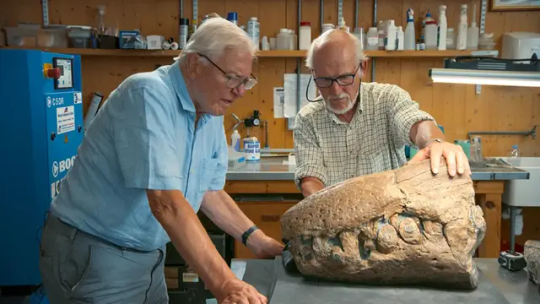
Such was the enormous size of the carnivorous marine reptile that the skull, excavated from a cliff along Dorset’s “Jurassic Coast,” is almost 2 meters (6.6 feet) long. In its fossilized form, the specimen weighs over half a metric ton. Pliosaurs species could grow to 15 meters (50 feet) in length, according to Encyclopaedia Britannica.
The fossil was buried deep in the cliff, about 11 meters (36 feet) above the ground and 15 meters (49 feet) down the cliff, local paleontologist Steve Etches, who helped uncover it, said in a video call.
Extracting it proved a perilous task, one fraught with danger as a crew raced against the clock during a window of good weather before summer storms closed in and the cliff eroded, possibly taking the rare and significant fossil with it.
Etches first learned of the fossil’s existence when his friend Philip Jacobs called him after coming across the pliosaur’s snout on the beach. Right from the start, they were “quite excited, because its jaws closed together which indicates (the fossil) is complete,” Etches said.
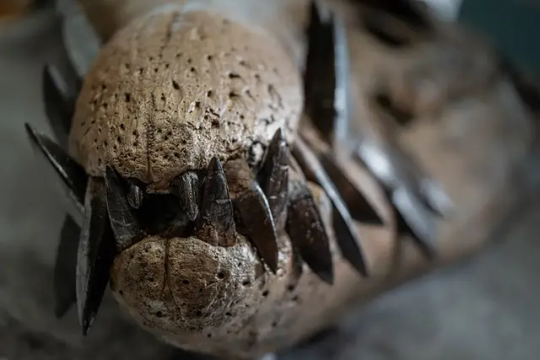

After using drones to map the cliff and identify the rest of the pliosaur’s precise position, Etches and his team embarked on a three-week operation, chiseling into the cliff while suspended in midair.
“It’s a miracle we got it out,” he said, “because we had one last day to get this thing out, which we did at 9:30 p.m.”
Etches took on the task of painstakingly restoring the skull. There was a time he found “very disillusioning” as the mud, and bone, had cracked, but “over the following days and weeks, it was a case of …, like a jigsaw, putting it all back. It took a long time but every bit of bone we got back in.”
It’s a “freak of nature” that this fossil remains in such good condition, Etches added. “It died in the right environment, there was a lot of sedimentation … so when it died and went down to the seafloor, it got buried quite quickly.”

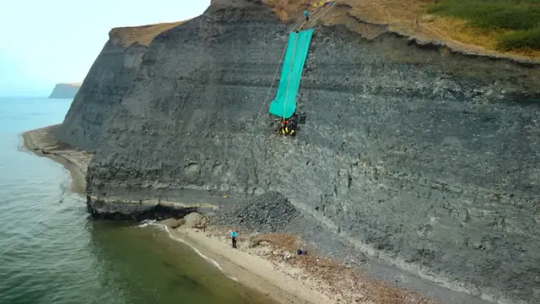

Fearsome top predator of the seas
The nearly intact fossil illuminates the characteristics that made the pliosaur a truly fearsome predator, hunting prey such as the dolphinlike ichthyosaur. The apex predator with huge razor-sharp teeth used a variety of senses, including sensory pits still visible on its skull that may have allowed it to detect changes in water pressure, according to the documentary.
The pliosaur had a bite twice as powerful as a saltwater crocodile, which has the world’s most powerful jaws today, according to Emily Rayfield, a professor of paleobiology at the University of Bristol in the United Kingdom who appeared in the documentary. The prehistoric marine predator would have been able to cut into a car, she said.
Andre Rowe, a postdoctoral research associate of paleobiology at the University of Bristol, added that “the animal would have been so massive that I think it would have been able to prey effectively on anything that was unfortunate enough to be in its space.”
By Issy Ronald.
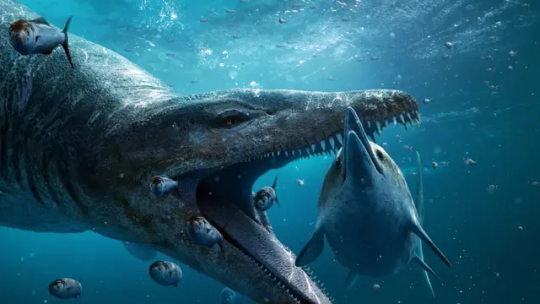
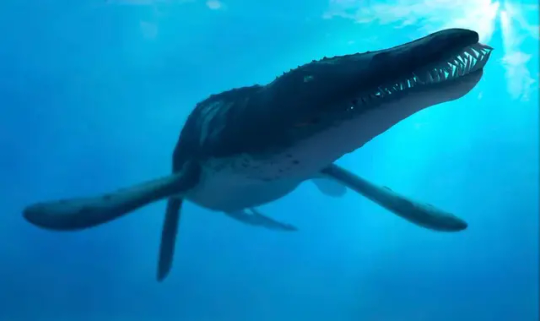
#Gigantic Skull of Prehistoric Sea Monster Found on England’s ‘Jurassic Coast’#Dorset England#pliosaur#jurassic#fossil#prehistoric#dinosaur#paleobiology#palaeontologists#archaeology#archeolgst#history#history news#ancient history#Sir David Attenborough#nature#naturalist
587 notes
·
View notes
Text

Some fishes !
#fish#fishes#fish art#digital painting#original art#naturalist#ecologist#my work#workforbirdprotectionleague#lpo#liguedeprotectiondesoiseaux#birdprotectionleague#hyeres#saltmarshes
672 notes
·
View notes
Text

1K notes
·
View notes